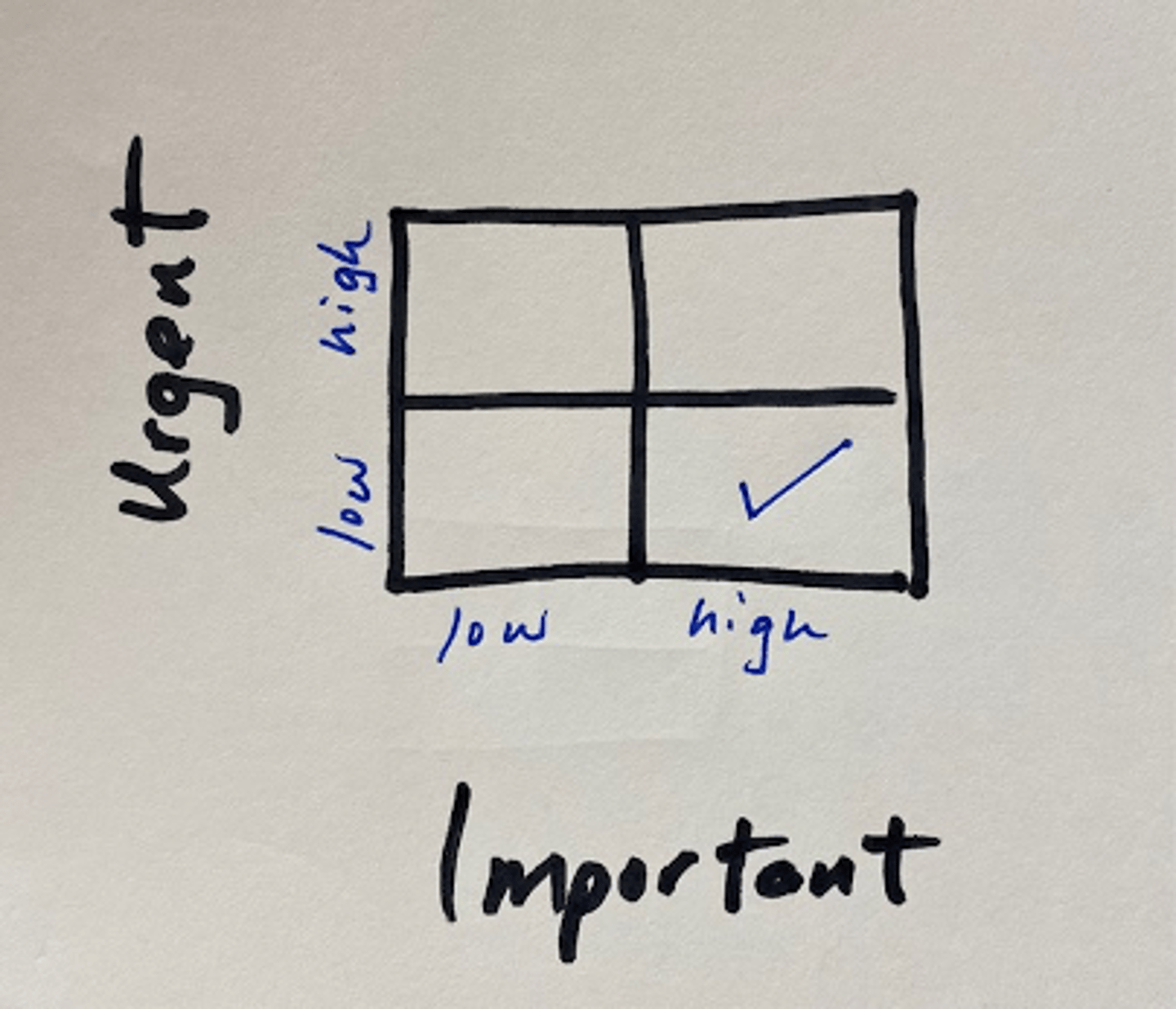Pharmacists, firefighters and architects: which one are you?
How do you make time for important yet non-urgent work?
A firefighter’s job is to act with urgency. What they do involves acting quickly, or else. Their work is also terribly important. This is not the way pharmacists want to operate.
Some urgent moments of pharmacy involve getting prescriptions filled, managing wait times and dealing with due dates like order cut-off times, answering phones and patient line-ups. While this urgent work needs to be done, it does not offer much by way of making the pharmacy operate more efficiently or being ready for the future.
Conversely, the non-urgent work such as building succession plans, interviewing future staff, meeting with new technology vendors ensures the pharmacy is sustainable for years to come. Since the urgent duties often crowd the time for thinking and planning, we need a new model for preserving the non-urgent work that gives the urgent work a place to get done.
How? The layered approach of having firefighters and architects
The firefighters are the essential day-to-day store operators. They drive the ship without having to worry about its course. They work within a designed philosophy, taking care of the patients in front of them and putting their own spin on how to execute the overall vision, set by an architect.
The architect brings the ship to port. They carry the overall responsibility of keeping the business alive. They are responsible for the pharmacy’s ability to service its community for decades beyond each individual patient interaction and daily shift. The architect nurtures a staff, provides tools and a motive for the firefighters. When something goes wrong, the architect accepts the bullets, protecting the firefighters.
Specifically in pharmacy, firefighters fill prescriptions, provide immunizations, counsel patients, develop care plans, run clinic days, manage inventory and fulfill a vision. They accomplish all the important work that must be done within a definite timeline, set to a specified timeframe (the urgent). Firefighters also act as a filter, deciding what updates and in how much detail need to be reported back to the architects.
While this is happening in the pharmacy, the architects are working on the pharmacy. Architects negotiate with vendors, invest in new technology, keep up with industry trends, manage the overall financial burden of operating a business, maintain a staff succession plan and serve as hands-on experts when firefighters need support.
The good old pharmacy model saw the pharmacist as the firefighter and the architect, with burnout waiting around the corner. This one-person band put out fires and built buildings. However, since pharmacy is much more complex today, we find that traditional jack-of-all-trades pharmacist divided into two different people. Like two compatible layers of a cake, one must focus on urgent tasks (the firefighters) and the other must work on non-urgent tasks (the architect).
It is a symbiotic relationship that allows the magic of pharmacy to happen. They allow dispensaries to build libraries instead of write books.
For deeper examples and strategies on how to symbiotically divide firefighters from architects, check out the Labcoat to Leader accelerator course here.








